Note: This website was automatically translated, so some terms or nuances may not be completely accurate.
Ways to Make "Towns" More Interesting: Ideas from the "Ultra Public Project" Members
Urban development is undergoing significant evolution. The power of technology and software is expanding cities' potential, while the range of participating players has also diversified. This time, we feature a roundtable discussion with Seiichi Saito, Tetsuya Hashimoto, and Yu Nishimuta from the urban development unit "Ultra Public Project." We also spoke with developers leading the forefront of urban development.

The Keyword is "Who is the Protagonist?"
Nishimuta: I feel urban development is becoming increasingly interesting right now, with many opportunities emerging. Technological advancements are creating chances for diverse participants, including companies previously distant from urban planning. Ultra Public Project (U-Pub) is a unit proposing new approaches within this landscape. First, the three of us from U-Pub will discuss why urban development is exciting now and what constitutes an ideal city.
Saitō: The reason urban development is becoming interesting is that various things are entering an update phase heading into 2020. Over the last few years, urban development has accelerated, grown in scale, and seen new forms emerge. However, right now, it's like a seesaw—it's wobbling. Whether the outcome of this update will be good or boring will be decided precisely during this period. When developing a city, biases tend to creep in due to various circumstances. But can we set those aside and aim for the most ideal, highest goal? That's the key to successful city development, and it's also Ulpub's stance.
Hashimoto: At its core, it boils down to "Who is the protagonist of the city?" While governments and companies build cities, the true protagonists are the citizens, the people. What can we do based on that premise? Ideally, we should be able to discuss things flatly, free of bias.
Nishimuta: That embodies Ulpub's "We are the city" spirit. Take Tokyo, for example—it's not uniform; each neighborhood actually has its own distinct character. What creates these different personalities and charms are the people who live there, the flow of visitors, their activities, and their gatherings. In other words, it's the people who truly shape the city. It may seem obvious, but we want to return to that fundamental truth. Rather than a city built solely from the hardware perspective of buildings and blocks, we want to pursue a vision of the city that truly should be this way, seen through the pure eyes of an ordinary citizen and from a more human perspective.
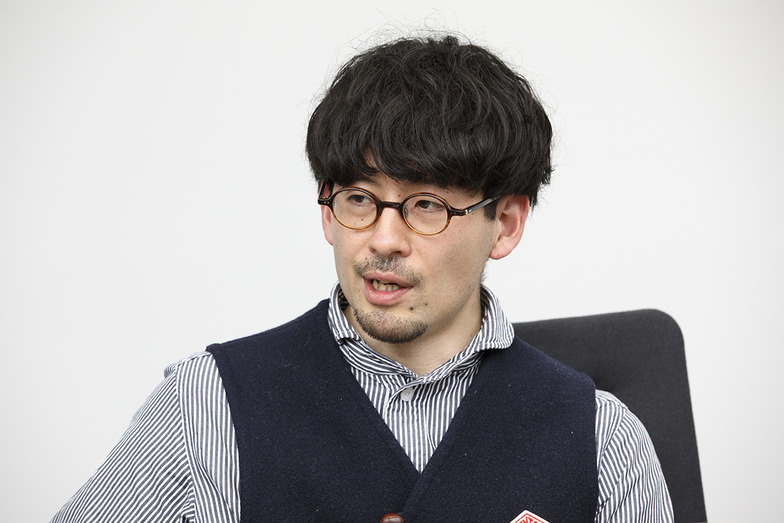
Technology is increasing the number of companies entering urban development
Nishimuta: Recently, advancements like GPS have enabled technology and content to take on a sense of "place." This elevates a city's potential in new ways. That said, the stage is still confined to smartphones. If we can further fuse the real and digital worlds—making the city itself the stage, or enabling feedback loops between the city and its elements—it would not only enhance residents' enjoyment but also create opportunities for corporate PR strategies. Couldn't this also open doors for companies and individuals previously distant from urban development to engage, treating the city as their stage and participating like cross-industry entrants?
Hashimoto: With the technology and elements now in place, the question is how to connect this to urban development. There are so many possibilities, which is exciting. There will be failures, but if we can make all citizens, the community, and the administration protagonists, the next steps to overcome those failures will naturally emerge from everyone. Within that process, it would be great if the unique character and personality of the city, as I mentioned earlier, could develop.
Saito: Broadly speaking, I think a good city is one where each role is clearly defined. Rather than Japan becoming uniform, it's better to have distinct characteristics like "Akihabara = electronics." Technology's strength lies in decentralizing and fragmenting business and systems. Therefore, the ideal for cities is to specialize: "This area is an outbound hub," "This area preserves traditional Japanese culture," "This area fosters new culture." The core in defining these roles and personalities must be the people themselves. It's crucial to analyze their voices and actions with a "clear eye." I believe cities built with this mindset become truly interesting.
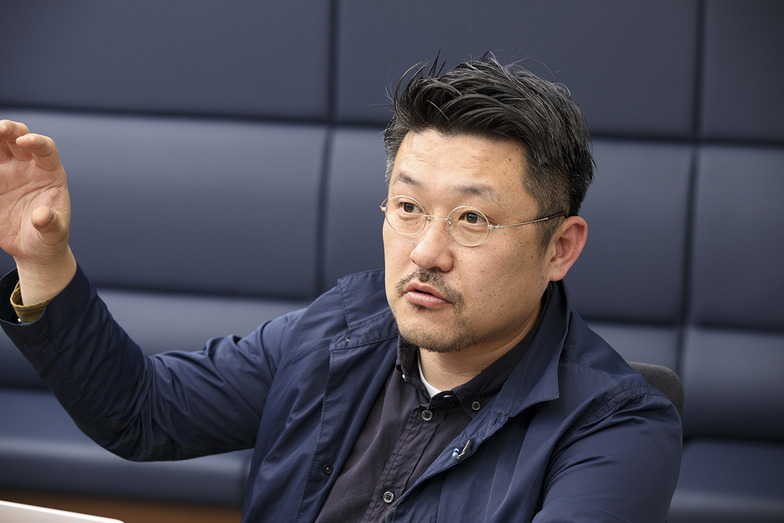
A balanced approach. What are the "challenges" to achieving this?
Nishimuta: Regarding the "interesting city" we've discussed so far, what challenges come to mind in the current situation?
Saito: For the town to divide roles effectively, the government and businesses must share local information with an open mind. If everyone shares information using the same language, we can divide tasks like, "We'll specialize in this, so you handle that..." However, we're not sharing information effectively yet. Unless we ease that tension, towns everywhere will just end up looking the same, right?
Hashimoto: I believe the "approach" also needs refinement in people-centered town development. Often, it's unclear who decides development plans for parks, riverbanks, and such. There should be more room for citizens to easily voice opinions and for the decision-making process to be transparent. In fact, initiatives focusing on this point are emerging, like Hamburg's HafenCity in Germany.
Saito: That connects to how we gather public opinion in urban planning, doesn't it? Recently, we've seen more cases where a single Twitter post forces companies to scramble for responses. But if we let ourselves be swayed by every single opinion, we won't create interesting cities. Regulations and rules are certainly important, but I feel there should be places for strict enforcement and places truly utilized as public spaces. We need to find that balance.
Nishimuta: I feel like cities currently lack places where people can truly belong. Sidewalks are just pathways for getting somewhere else. But if there were something wonderful there that made you want to stop and linger, even a sidewalk could become a favorite spot. Using technology to add more of these playful elements and installations to the city might make the city itself a place where people feel they belong.
Saito: The design of Norway's Oslo Opera House is fascinating—it has intentionally steep slopes. You see elderly people walking up and down them for exercise. That's a good example, but I want to add more entertainment elements to transform the city's structure. Japan should incorporate more of these elements. Regarding the Building Standards Act, we must of course comply, but should every building and space adhere strictly? I think exceptions should be allowed.
Hamburg HafenCity
Urban development that listens to residents' voices

The waterfront area located north of the Elbe River in Hamburg, Germany's second-largest city. Once a thriving free port, its redevelopment was approved by the city council in 1997, with the master plan completed in 2000. Spanning 157 hectares, this project is one of Europe's largest urban development initiatives, integrating residential complexes, commercial facilities, offices, and cultural/leisure venues.
Oslo Opera House
The slope is deliberately steep
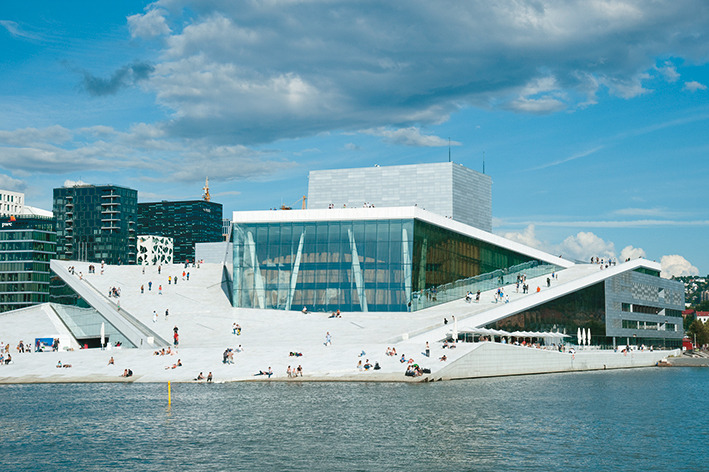
Located in the Bjørvika district facing the Oslofjord, this is one of Norway's largest cultural facilities. It was completed in 2007. The building's design, reminiscent of an iceberg, was created by the Norwegian architectural firm Snøhetta, known for projects like the Bibliotheca Alexandrina in Egypt and the Norwegian Embassy in Berlin. Its steeply sloped, walkable roof has also become a popular tourist attraction.
Shaping public opinion. Participation from all players!
Nishimuta: We must adhere to regulations where necessary and allow flexibility where appropriate. To strike this balance effectively, it's crucial to stay close to the people and understand what citizens truly desire.
Saito: For instance, when surveying citizens about "what our town needs," it would be great if we could frame it as entertainment, like a brainstorming session. Create a system to properly gather voices like "a cafe here would be nice" or "make the paved roads prettier," and ultimately let the local leader decide.
Hashimoto: I live in an apartment building. When people start saying things like, "Wouldn't it be cool if we turned the area around our building into this kind of neighborhood?" it really feels like life starts changing just from that conversation. Local governments are also increasingly seeking public input. Places like Himi City in Toyama Prefecture and Makinohara City in Shizuoka Prefecture have started initiatives, similar to Hafen City, where they ask citizens for their ideas on town development.
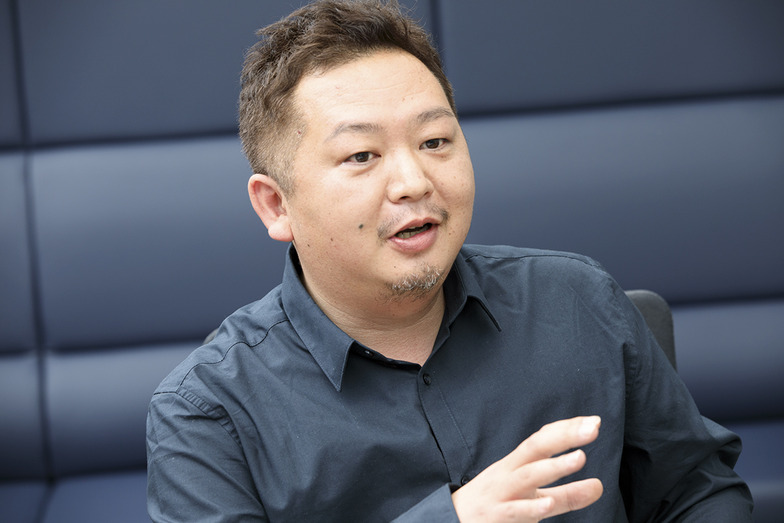
Saito: Yokohama City's "Co-creation Promotion Office," which advances public-private partnerships, is another example. This trend of involving everyone in town planning is definitely accelerating.
Nishimuta: To realize the public will gathered this way, I really want people who weren't previously players in town development to get involved too. For example, companies with drone technology could devise navigation plans, or sports using the town itself as a field could emerge. Companies previously unrelated to town development could team up with developers... The more ideas spread, the more interesting it becomes.
Saito: Private companies entering urban development as an opportunity and realizing citizens' aspirations. That's the kind of ultra-public we should aim for. Our project strives for that very model. Let's definitely put it into action!
What Ultra Public Envisions
"A Town Like This Might Be Interesting"



Ultra Public Project
Known as Ulpub. A unit launched by members from three companies: Rhizomatiks, TYO, and Dentsu Live Inc. Under the banner "We are the city," they propose urban development not through physical infrastructure but through the power of various software solutions. Their ethos is to reexamine the city "with a pure eye, free from various biases."
ultrapublic.jp/

The "Future City" Envisioned by Key Urban Development Players
Even in redevelopment projects already underway in Tokyo, new approaches to city planning based on fresh ideas are being implemented. What kind of partnerships do the key figures behind these projects envision, and what kind of "future city" do they envision? We interviewed three individuals.
Mitsui Fudosan
Hibiya Urban Development Promotion Department, Business Group, General Manager
Koichi Ota
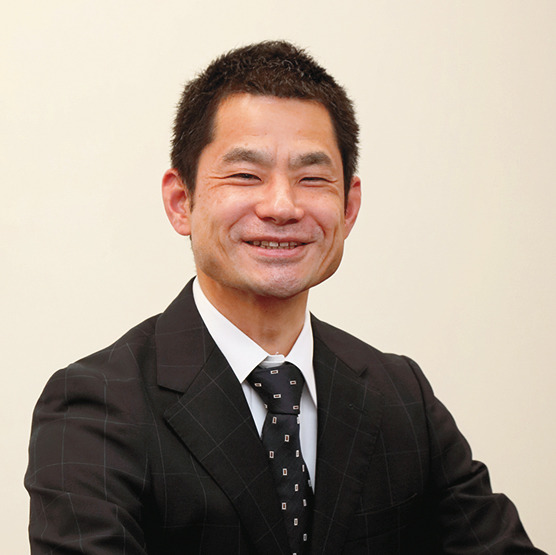
Creating a new Hibiya
Promoting a new "Hibiya" as a city of art and culture
I have been involved in developments such as Akasaka Sacas and am currently in charge of the (tentative name) New Hibiya Project. In urban development, I make it a point to thoroughly discuss with local residents and landowners what they envision for the area after development. The local community must remain the main focus; unless the people there shine, the area's appeal won't increase. To achieve this, I engage in repeated dialogue to understand their aspirations.
For the New Hibiya Project, we've held study sessions with local residents. Hibiya has long been a business hub and a center for culture and the arts, including theater and film. It also boasts Hibiya Park, one of Tokyo's premier central parks. However, challenges existed, such as the lack of pedestrian flow due to the area being surrounded by major roads and railway overpasses, creating a sense of isolation from the surrounding neighborhoods. Within this context, we've worked with the community to re-examine Hibiya's existing assets, aiming not just to revive it but to create a new town.
One key development concept is "open space," aiming for a city where parks and the urban fabric work together. Hibiya hosts hubs for content like film and theater. Rather than each operating in isolation, collaboration between these hubs—and the public spaces connecting them—can create a broader cultural landscape. For example, using public spaces to create opportunities for people to casually encounter traditional performing arts or theater. This could spark interest, leading those previously uninterested to visit theaters. Modern technology should enable such installations in public spaces. This approach could transform Hibiya into a city that actively disseminates culture.
(Provisional Name) New Hibiya Project
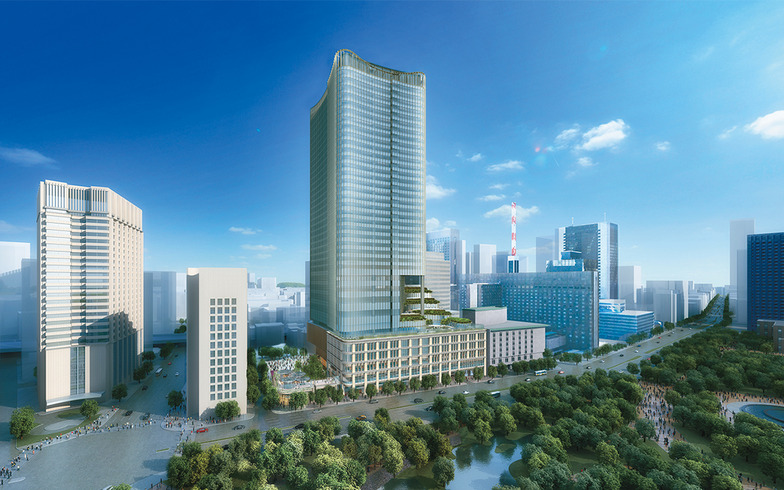
A redevelopment project underway in Yurakucho 1-chome, Chiyoda Ward. A mixed-use facility with 35 above-ground floors and 4 basement floors is scheduled to open in spring 2018, comprising offices, commercial facilities, and more. A core project in "Creating Hibiya: International Business and Arts & Culture Hub," it will feature a new 11-screen cinema complex on the 4th and 5th floors. It will also integrate operations with the adjacent Scala Theater and Miyuki Theater within the Tokyo Takarazuka Building. The building will include lush terraces, creating continuity with the neighboring Hibiya Park.
Mitsubishi Estate Co., Ltd.
and General Affairs Department, Facility Management Office, General Manager
Mr. Naoki Tanizawa
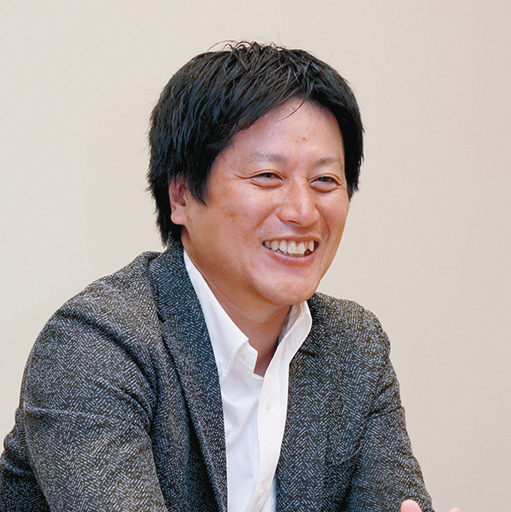
First, a proof-of-concept experiment with the headquarters relocation
In 10 years, Tokyo Station will become a massive testing ground
Currently, plans are advancing for the redevelopment of the Tokiwa Bridge district near Tokyo Station, slated for completion in 10 years. Upon completion, it will be Japan's tallest structure. I am concurrently responsible for this project and the headquarters relocation project. While these two projects may appear entirely separate, they are actually closely intertwined. This is because, in today's rapidly changing landscape of work styles and workplace concepts, the very way we design cities and buildings must fundamentally evolve. Therefore, we plan to conduct pilot tests of new systems at our new headquarters, scheduled to relocate in the latter half of this fiscal year, and feed the results back into the Tokiwa Bridge project.
One system we want to test is a solution for lunch-time crowds. Downtown restaurants are packed at noon, but if we could broadcast real-time availability, it would eliminate the search time. While still an idea, we want to use this process of testing in Tokiwa Bridge as a catalyst to change how we build cities.
Actually, "experimental ground" is a key concept for Tokiwa Bridge too. Ideally, the entire area could remain a "whole-area experimental ground" as a smart district. Picture self-driving cars cruising around, robots present. Visiting this town could spark new discoveries and real-world experiences, potentially leading to a new style of urban tourism. Urban development hinges on editing time and space; the combination of different elements creates something new. Precisely because Tokiwa Bridge is a testing ground, every sector of the B2B business world should become a partner. We aim for the "ideas that create value in every scene of urban life" born in Tokiwa Bridge to become part of Tokyo's identity.
Tokiwabashi District Redevelopment Project
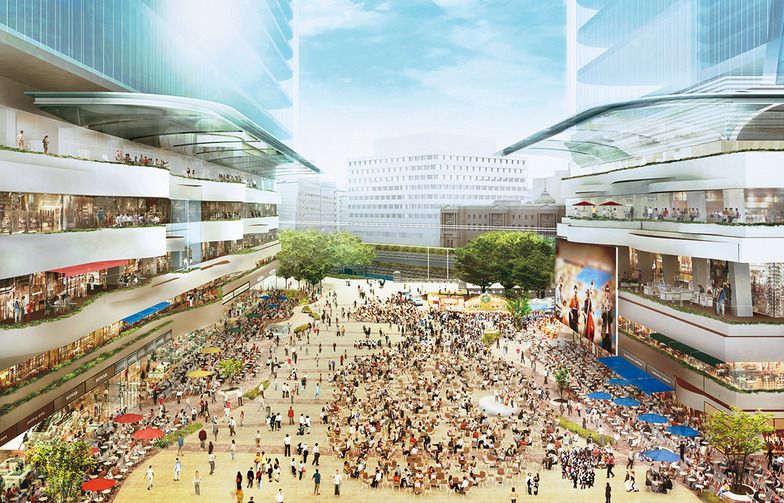
A complex redevelopment project in the Tokiwa Bridge district in front of Tokyo Station's Nihonbashi Exit, involving the phased development of four buildings over an extended period until fiscal year 2027. Features include a 390-meter-tall super high-rise tower and a large plaza spanning approximately 7,000 square meters, expected to become a new face of Tokyo. A key feature of the development is that construction will proceed while maintaining the functions of critical infrastructure within the block, such as the sewage pumping station and substation. Furthermore, an underground pedestrian network connecting Tokyo Station and surrounding areas will be established to strengthen the area's connectivity.
Mori Building Town Management Division
Toranomon Hills Area Operations Group Leader
(GINZA SIX Retail Management Promotion Department)
Kotaro Tanigawa
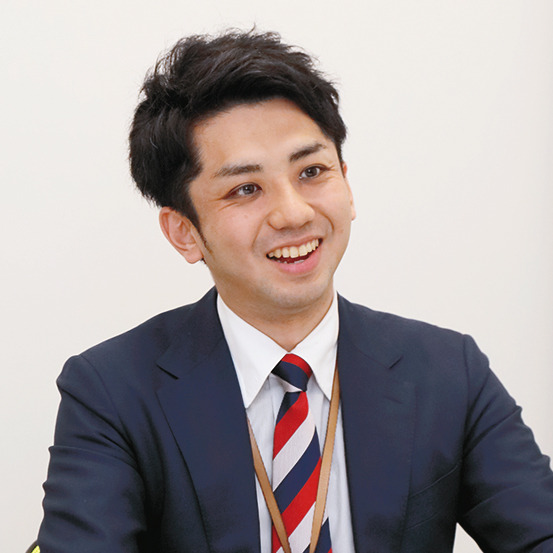
Urban development is a continuous dialogue
Maintaining Freshness and "Nurturing"
Urban development isn't complete once built; nurturing it is our mission. Having managed Roppongi Hills and Toranomon Hills, I've continued producing these districts since their openings. For example, at Roppongi Hills, we held Bon dances, events on the rooftop garden, and "Roppongi Art Night," which utilized the entire area by collaborating with surrounding facilities. On Shintora Street, we organized the "Tokyo Shintora Festival," bringing together six festivals renowned in Tohoku. Repeating the same events inevitably leads to boredom, so we constantly maintain freshness and rebrand through new events.
My constant focus is building relationships with residents and workers to co-create the district. For Toranomon events, we held numerous local meetings to refine plans. For the opening of GINZA SIX, where I'm currently involved, we continue deep discussions with stakeholders on how to launch and nurture the project.
Looking ahead, I see potential in exploring the role of public spaces like roads and collaborating with individuals and companies who bring innovative ideas. For instance, through our joint research with MIT Media Lab, we might create clean offices where people can maintain their health while working—not by disinfecting, but by adding beneficial bacteria indoors using biotechnology. It would also be fascinating to create something new by connecting seemingly unrelated fields like AI with urban environments.
Our goal is to make Tokyo the world's greatest city. We are committed to enhancing the "magnetic pull" of Ginza and Tokyo through GINZA SIX, making it a powerful magnet that draws people in. This philosophy underpins all our events and activities. Our efforts will continue long after the opening.
GINZA SIX
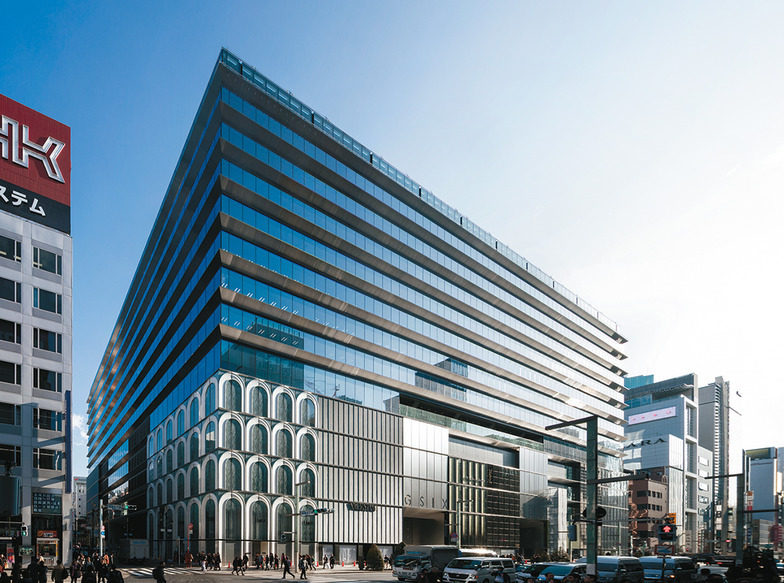
A new large-scale complex facility opened on April 20th. Located in the heart of Ginza, "Ginza 6-chome," it represents a major redevelopment encompassing the former Matsuzakaya Ginza store site and surrounding areas. The building, with a total floor area of approximately 148,700 square meters—the largest among Ginza's complexes—houses 241 stores, along with offices capable of accommodating about 3,000 workers, a Noh theater, and a tourist information center. Along its approximately 115-meter frontage facing Chuo-dori Avenue, six luxury brands are lined up. Art is displayed throughout the building, and a garden of approximately 4,000 square meters is being developed on the rooftop. This is a joint project by four companies: J. Front Retailing, Mori Building, L. Catalton Real Estate, and Sumitomo Corporation.
The emerging potential of "future city development"
The scattered charms of the city will be fused with public spaces, developed as a cohesive area, and transformed into a stage for nurturing culture. As an experimental space for creating new value, it will combine different elements and people to generate something new. The city, created in collaboration with residents and the community, will be rebranded and nurtured through repeated events, constantly maintaining its freshness.
A common thread among the three ongoing projects is their approach beyond mere physical infrastructure. They aim to let the appeal of facilities permeate the city or use those facilities as magnets to draw people, thereby generating new activities. This is urban development driven not just by hardware, but by a software-based approach.
Of course, city development isn't something that can be done by just one person.
If more diverse players and technologies can participate in urban development and generate new value for the city, wouldn't the city become an even more attractive place?
From cutting-edge development projects, we could sense the potential for this "future of urban development."
The Ultra Public Project is an initiative that explores and implements ways to make cities more enjoyable through technology and entertainment. We, too, want to shape the form of the "future of city development" through our own perspectives and approaches.
Dentsu Live Inc., Yu Nishimuta
(Ultra Public Project Member)
Was this article helpful?
Newsletter registration is here
We select and publish important news every day
For inquiries about this article
Author

Tetsuya Hashimoto
TYO
Sales Headquarters
Producer
Engaged in producing communication design and experience design across diverse fields including visual media, digital media, physical spaces, urban development, and new business development.

Seiichi Saito
Rhizomatiks
President and CEO
Born in Kanagawa in 1975. Studied architectural design at Columbia University's Graduate School of Architecture, Planning and Preservation (MSAAD) and began working in New York in 2000. Subsequently worked as a creative at the Arnell Group. Returned to Japan after being selected as an artist for the 2003 Echigo-Tsumari Art Triennale. After working as a freelance creative, he founded Rhizomatiks in 2006. Building on the logical thinking cultivated through architecture, he continues to create numerous three-dimensional and interactive works in the realms of art and commercial media. He received numerous domestic and international advertising awards from 2009 to 2014. Currently, he is the CEO of Rhizomatiks and a part-time lecturer in the Department of Design at Kyoto Seika University. He served as a juror for the D&AD Digital Design category in 2013 and for the Branded Content and Entertainment category at the Cannes Lions in 2014. In 2015, he was the Theater Content Director for the Japan Pavilion at Expo Milano and the Media Art Director for Roppongi Art Night 2015. He was also a juror for the Good Design Award 2015-2016.

Yū Nishimuta
Dentsu Inc.
Dentsu Live Inc.
Planner
Joined Dentsu Inc. in April 2009. Since joining, has been involved in planning and production work in the event and space design field. Has extensive experience both domestically and internationally, including large-scale exhibitions, private shows, promotional events, and facility/shop production. While maintaining a core focus on the event and space field, is currently collaborating with partners across various fields to challenge new forms of expression.
